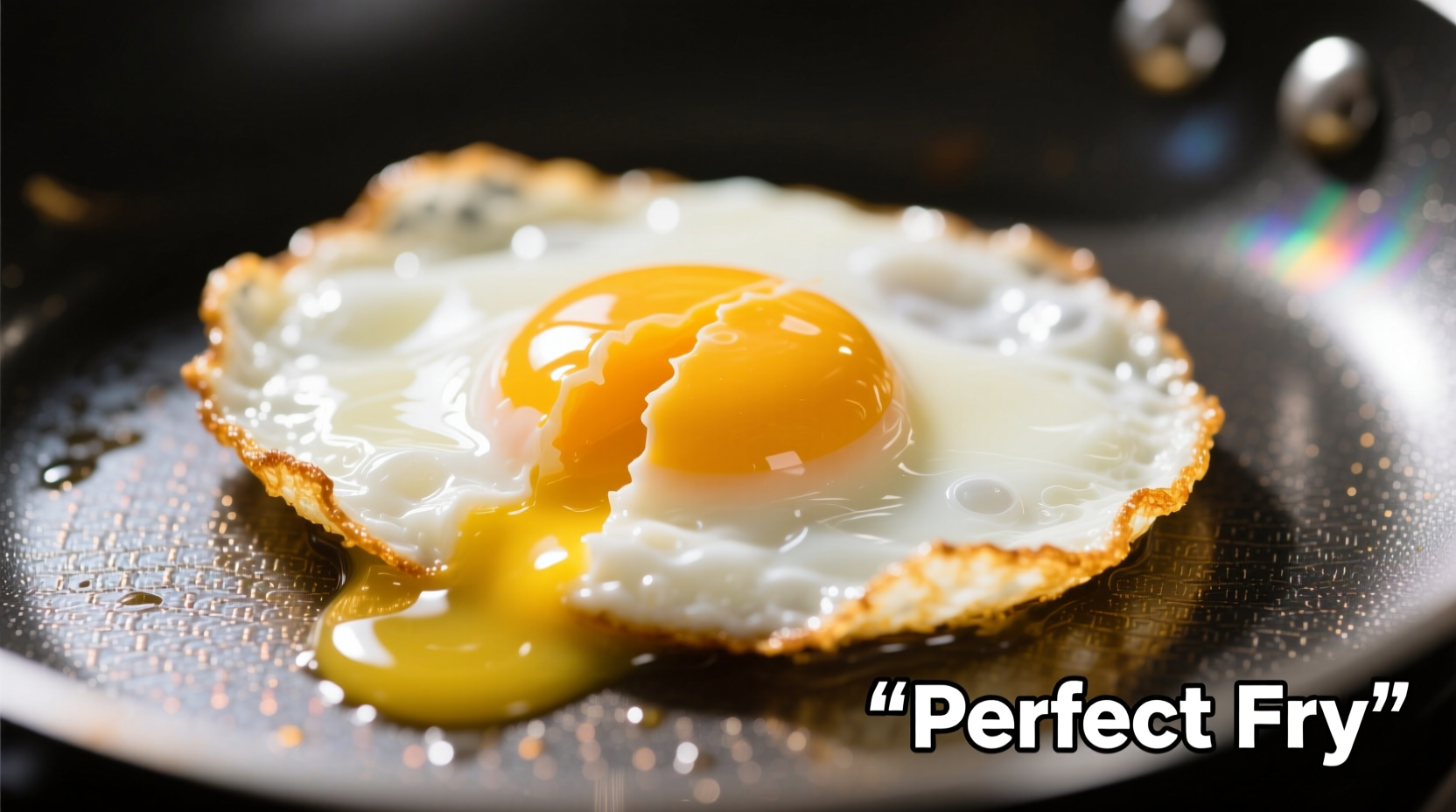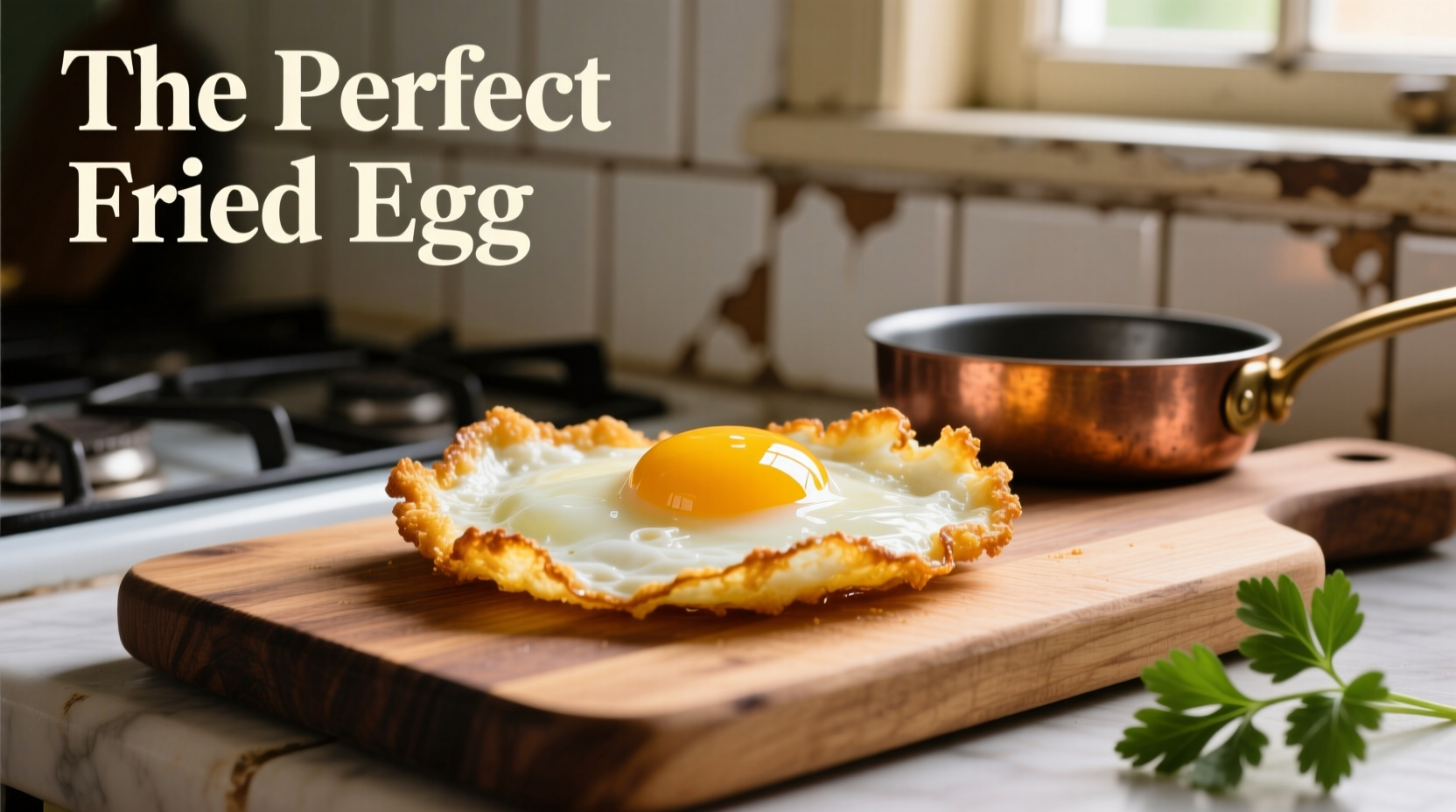Master the perfect fried egg in 6 minutes with this professional technique: Use a non-stick skillet over medium-low heat, 1 teaspoon of oil or butter per egg, and cover the pan for the last 30 seconds to set the whites without flipping. The ideal temperature is 275-300°F (135-150°C) for evenly cooked eggs with tender whites and runny yolks.
There's nothing more frustrating than a fried egg that's burnt on the bottom but raw on top, or whites that spread uncontrollably across the pan. As a chef who's cooked thousands of eggs in both high-end restaurants and home kitchens, I've perfected a reliable method that works every time. Whether you're craving sunny-side up, over-easy, or crispy-edged restaurant-style eggs, this guide delivers consistent results with minimal equipment.
Why This Method Works Better
Most home cooks make three critical mistakes: using too high heat, selecting the wrong fat, and not controlling moisture. Professional kitchens achieve perfect fried eggs through precise temperature management and understanding egg chemistry. When egg proteins hit 140°F (60°C), they begin to coagulate - too fast causes rubbery texture, too slow creates uneven cooking.
| Cooking Fat | Smoke Point | Best For | Flavor Impact |
|---|---|---|---|
| Ghee | 485°F (252°C) | Crispy-edged eggs | Nutty, rich |
| Avocado Oil | 520°F (271°C) | High-heat cooking | Neutral |
| Butter | 300°F (150°C) | Sunny-side up | Classic richness |
| Olive Oil | 375°F (190°C) | Medium-heat cooking | Fruity notes |
Source: USDA Food Safety and Inspection Service cooking fat guidelines
Your Essential Equipment Checklist
You don't need fancy tools, but the right equipment makes a dramatic difference:
- 8-10 inch non-stick skillet - Ceramic or PTFE-coated (avoid scratched pans)
- Spatula with thin edge - Silicone or fish spatula style
- Lid that fits your pan - Glass preferred for monitoring
- Thermometer - Infrared or instant-read (optional but recommended)
Step-by-Step Perfect Fried Egg Technique
1. Pan Preparation (The Critical First Step)
Place your empty skillet on the burner and heat on medium-low for 2 minutes. The ideal temperature range is 275-300°F (135-150°C). Test by flicking a few water droplets - they should dance and evaporate in 2-3 seconds. Too hot and your egg will instantly brown; too cool and it will spread excessively.
2. Fat Selection and Application
Add exactly 1 teaspoon of your chosen fat per egg. Swirl to coat the bottom evenly. Wait until the fat shimmers but doesn't smoke - this takes 30-60 seconds. Butter should foam slightly but not brown.
3. Egg Cracking Technique
Crack each egg into a small bowl first - this prevents shell fragments and gives you control. Hold the bowl 1 inch above the pan and slide the egg in gently. For restaurant-style compact eggs, create a small well in the center of the hot fat before adding the egg.

4. Cooking to Perfection
For sunny-side up: Cook undisturbed for 2-3 minutes until edges set. When whites are mostly opaque but still slightly wet on top, cover the pan for 30-60 seconds to steam-set the top whites without flipping. For over-easy: Flip when edges are set (about 2 minutes) and cook 15-30 seconds more.
5. Doneness Visual Guide
Don't rely on timing alone - watch these visual cues:
- Sunny-side up: Whites fully set, yolk dome intact, top layer of white just turned opaque
- Over-easy: Yolk slightly jiggles when pan is shaken, white completely set
- Crispy edges: Lacy, golden brown edges with defined shape
Avoid These Common Mistakes
Even experienced cooks fall into these traps:
- The high-heat rush: Cooking on high heat creates tough, rubbery whites and unevenly cooked yolks
- Overcrowding: Cooking multiple eggs too close causes uneven cooking and sticking
- Peeking too often: Lifting the lid releases steam needed for properly set whites
- Using cold eggs: Room temperature eggs cook more evenly (take eggs out 20 minutes before cooking)
Temperature Safety Guidelines
According to USDA food safety standards, eggs should reach 160°F (71°C) to eliminate salmonella risk. For runny yolk lovers, use fresh eggs (within 1-2 weeks of purchase) and ensure whites are fully set. The FDA recommends consuming cooked eggs within 2 hours of preparation.
Advanced Techniques for Restaurant-Quality Results
Basted Eggs Method
For perfectly set whites without flipping: After 2 minutes of cooking, add 1 tablespoon of water to the hot pan and immediately cover. The steam created will gently cook the top of the egg. This technique works especially well for over-medium eggs.
Cast Iron Alternative
If using seasoned cast iron: Preheat pan to 300°F (150°C), add 1 tsp oil, then immediately reduce heat to low before adding the egg. The retained heat will continue cooking the egg gently. Wipe the pan with a paper towel between eggs for best results.
Troubleshooting Guide
| Problem | Causes | Solution |
|---|---|---|
| Egg sticks to pan | Insufficient preheating, scratched coating, low-quality pan | Replace pan if scratched; ensure proper preheating; use enough fat |
| Whites spread too much | Pan too hot, old eggs, no well created | Use fresher eggs; create depression in fat; lower heat |
| Burnt bottom, raw top | Heat too high, no lid used | Reduce heat to medium-low; cover pan for last 30-60 seconds |
Perfect Pairings
Complement your perfectly cooked egg with these professional combinations:
- Sunny-side up: On avocado toast with everything bagel seasoning
- Over-easy: With crispy hash browns and sautéed spinach
- Crispy-edged: On brioche with truffle aioli and microgreens
Final Pro Tips
For consistently perfect results, remember these chef secrets:
- Use eggs within 1-2 weeks of purchase for best shape retention
- Always cook eggs in a single layer with space between them
- Season AFTER cooking to prevent premature protein breakdown
- Clean your pan while warm (not hot) for longest non-stick life











 浙公网安备
33010002000092号
浙公网安备
33010002000092号 浙B2-20120091-4
浙B2-20120091-4